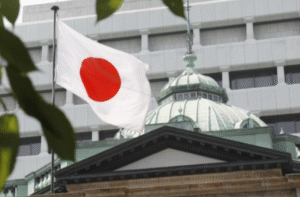$DXY $XAU $BTC
#Finance #USD #FederalReserve #Stocks #Crypto #Investing #Economy #Trade #Manufacturing #Dollar #InterestRates #MarketAnalysis
The US president is attempting to balance two competing priorities: promoting domestic manufacturing while maintaining the dollar’s status as the world’s reserve currency. Historically, a strong dollar benefits global trade dominance and keeps borrowing costs low, but it can also make American exports less competitive. Conversely, policies aimed at strengthening domestic production, such as tariffs or subsidies, might weaken the dollar by increasing inflationary pressures and reducing global demand for US currency. Finding a middle ground—akin to the 1985 Plaza Accord, which successfully weakened an overvalued dollar—requires careful coordination with global economic partners who may not be willing or incentivized to align with such a strategy.
The conflict between a strong dollar and domestic manufacturing incentives is evident in the foreign exchange and commodity markets. The US Dollar Index ($DXY) has been resilient due to relatively high interest rates, making the dollar attractive for foreign investors. However, as the Federal Reserve weighs potential rate cuts to stimulate economic growth, concerns arise about capital outflows and the subsequent impact on inflation. A weaker dollar could benefit US manufacturers by making exports more competitive, but it might also drive commodity prices higher, particularly gold ($XAU) and oil, further complicating monetary policy decisions. Cryptocurrency markets, particularly Bitcoin ($BTC), are also sensitive to a shifting dollar landscape, as investors often view digital assets as a hedge against currency depreciation.
Investor confidence hinges on how effectively the administration navigates these economic trade-offs. Treasury policies aimed at controlled dollar depreciation could ease trade imbalances but risk alienating foreign creditors, particularly nations holding significant US debt, like China and Japan. Meanwhile, protected industries might see short-term benefits, but supply chain disruptions and retaliatory trade measures could limit the intended gains. The stock market’s response will likely depend on sector-specific implications, with exporters potentially benefiting while import-heavy sectors suffer from higher costs. A sharp decline in the dollar could also accelerate capital inflows into alternative assets, including commodities and emerging markets, reshaping global investment strategies.
Ultimately, achieving a Mar-a-Lago Accord that both supports US manufacturing and sustains dollar stability is a formidable challenge. Without multilateral cooperation akin to the Plaza Accord, unilateral efforts to weaken the currency could trigger volatility and unintended consequences. Market participants will closely monitor interest rate decisions, geopolitical developments, and fiscal policies to gauge their impact on inflation, trade balances, and financial stability. Investors should prepare for potential fluctuations, as shifts in dollar policy will create ripple effects across equities, bonds, commodities, and cryptocurrencies, shaping global market dynamics in the coming years.











Comments are closed.